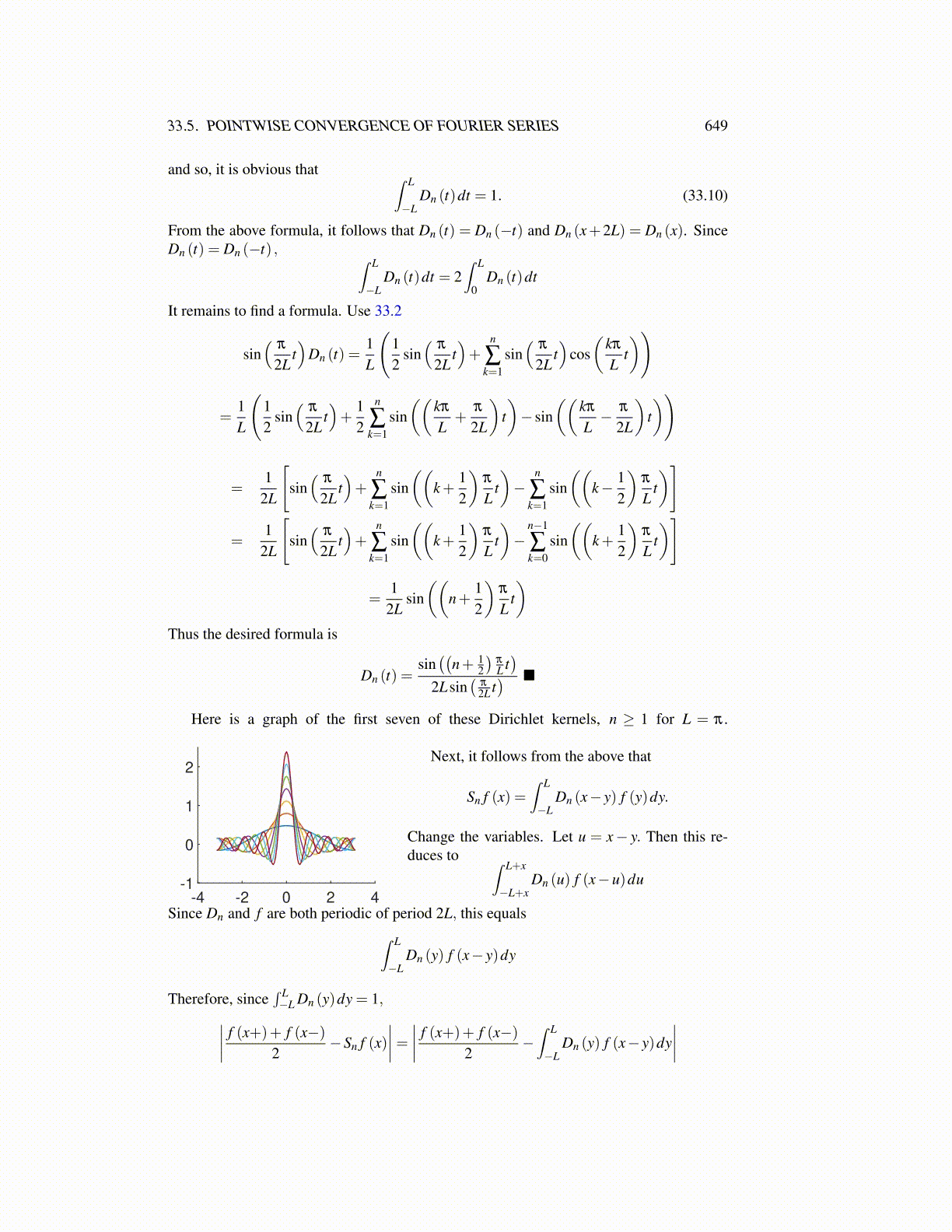
33.5. POINTWISE CONVERGENCE OF FOURIER SERIES 649
and so, it is obvious that ∫ L
−LDn (t)dt = 1. (33.10)
From the above formula, it follows that Dn (t) = Dn (−t) and Dn (x+2L) = Dn (x). SinceDn (t) = Dn (−t) , ∫ L
−LDn (t)dt = 2
∫ L
0Dn (t)dt
It remains to find a formula. Use 33.2
sin(
π
2Lt)
Dn (t) =1L
(12
sin(
π
2Lt)+
n
∑k=1
sin(
π
2Lt)
cos(
kπ
Lt))
=1L
(12
sin(
π
2Lt)+
12
n
∑k=1
sin((
kπ
L+
π
2L
)t)− sin
((kπ
L− π
2L
)t))
=1
2L
[sin(
π
2Lt)+
n
∑k=1
sin((
k+12
)π
Lt)−
n
∑k=1
sin((
k− 12
)π
Lt)]
=1
2L
[sin(
π
2Lt)+
n
∑k=1
sin((
k+12
)π
Lt)−
n−1
∑k=0
sin((
k+12
)π
Lt)]
=1
2Lsin((
n+12
)π
Lt)
Thus the desired formula is
Dn (t) =sin((
n+ 12
)π
L t)
2Lsin(
π
2L t) ■
Here is a graph of the first seven of these Dirichlet kernels, n ≥ 1 for L = π .
-4 -2 0 2 4-1
0
1
2Next, it follows from the above that
Sn f (x) =∫ L
−LDn (x− y) f (y)dy.
Change the variables. Let u = x− y. Then this re-duces to ∫ L+x
−L+xDn (u) f (x−u)du
Since Dn and f are both periodic of period 2L, this equals∫ L
−LDn (y) f (x− y)dy
Therefore, since∫ L−L Dn (y)dy = 1,∣∣∣∣ f (x+)+ f (x−)
2−Sn f (x)
∣∣∣∣= ∣∣∣∣ f (x+)+ f (x−)2
−∫ L
−LDn (y) f (x− y)dy
∣∣∣∣